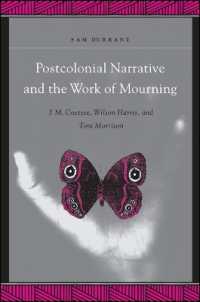Full Description
A visible cynicism creeps in.Images of war saturated American culture between the 1940s and the 1970s, as U.S. troops marched off to battle in World War II, the Korean War, and the Vietnam War. Exploring representations of servicemen in the popular press, government propaganda, museum exhibits, literature, film, and television, Andrew Huebner traces the evolution of a storied American icon: the combat soldier.Huebner challenges the pervasive assumption that Vietnam brought drastic changes in portrayals of the American warrior, with the jaded serviceman of the 1960s and 1970s shown in stark contrast to the patriotic citizen-soldier of World War II. In fact, Huebner shows, cracks began to appear in sentimental images of the military late in World War II and were particularly apparent during the Korean conflict. Journalists, filmmakers, novelists, and poets increasingly portrayed the steep costs of combat, depicting soldiers who were harmed rather than hardened by war, isolated from rather than supported by their military leadership and American society. Across all three wars, Huebner argues, the warrior image conveyed a growing cynicism about armed conflict, the federal government, and Cold War militarization.








